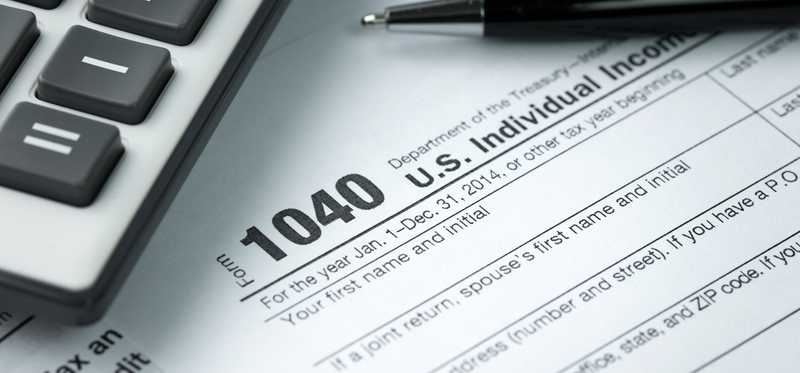10 Things to Look for in Your Company's 401(k) Plan

10 Things to Look for in Your Company's 401(k) Plan
Sizing up your 401(k)
401(k) plans run the gamut in terms of quality. Some have all the right features to streamline your wealth building. And others, well, let's just say you might be better off splitting your contributions between an IRA and a taxable brokerage account instead. To understand where your employer's 401(k) falls on that spectrum, size up how the plan ranks on these 10 key features.
5 Winning Stocks Under $49
We hear it over and over from investors, “I wish I had bought Amazon or Netflix when they were first recommended by the Motley Fool. I’d be sitting on a gold mine!” And it’s true. And while Amazon and Netflix have had a good run, we think these 5 other stocks are screaming buys. And you can buy them now for less than $49 a share! Simply click here to learn how to get your copy of “5 Growth Stocks Under $49” for FREE for a limited time only.
Previous
Next

1. Eligibility rules
Some employers allow you to contribute to their 401(k) within 45 days of your hire date, and others do not. The IRS allows employers to enforce a minimum waiting period of up to one year of employment or 1,000 hours of service. After you meet the service requirement, you then have to wait until the plan's defined entry dates to join. Entry dates can be monthly, quarterly, or semiannual.
The best 401(k) plans have no minimum service requirements and allow for entry on a monthly basis. That gives you the option to start contributing almost immediately. The most restrictive plans in terms of eligibility require one year of unemployment and offer only semiannual entry dates.
ALSO READ: 5 Ways to Squeeze Every Last Penny Out of Your 401(k)
Previous
Next

2. Quality investment options
A good 401(k) investment menu includes a range of affordable funds. You should see equity index funds, bond funds, target date funds, and balanced funds that hold equities and bonds together. You also want access to funds that provide more specific types of exposure, say to international markets; value stocks versus growth stocks; and small, medium, and large companies.
Additionally, your fund options should include passive funds with low expense ratios -- something less than 0.25%. Fund expenses reduce your returns, so a lower expense ratio means less downward pressure on your investment performance.
Unfortunately, some smaller 401(k) plans only offer mutual funds with expense ratios averaging 1% or more.
Previous
Next

3. Automatic contribution increases
The key to retiring with ample savings is regularly increasing your contributions over time. Some 401(k) plans automate that process for you with scheduled contribution increases. You could, for example, set your contribution rate at 7% of your pay, with a 1-point increase annually. If you time the increase from 7% to 8% to hit when you're scheduled to get a raise, you might not even notice you're saving more.
Without this automation feature, you'd have to log in to your account and manually change your contribution rate each year. That's not a hard task, but it's one most of us will put off or simply forget to do.
Previous
Next

4. Automatic rebalancing
Rebalancing is the process of adjusting your portfolio to reach a targeted composition of different asset classes (e.g., stocks and bonds). This is an important part of managing risk in your retirement account. Typically, your equity positions will grow in value, constituting an increasingly larger share of your wealth. Leave that growth unchecked and you could have a much higher concentration of equities than you'd like. A higher concentration of equities generally means more volatility.
You'd fix that problem by periodically selling off some of your fast-growing equities and using the proceeds to buy up more bonds. You can do this manually, but you don't have to if your 401(k) has an automatic rebalancing feature. To use automatic rebalancing, you have to specify your desired portfolio composition and how often you want to rebalance. When it's time to rebalance, the system processes the necessary trades on its own.
ALSO READ: So You've Got a 401(k) and Don't Know What to Do With It
Previous
Next

5. Employer match rules
One of the most consequential features of many 401(k) plans is the employer match. Two numbers define how rich your matching program is: the match rate and the cap. The match rate specifies the relative amount your employer deposits into your account for every $1 you contribute. This is often 50% or 100%.
The cap is the maximum percentage of your salary the employer will contribute. According to a 2019 Fidelity report, employers contribute an average of 4.7% of the employee's salary. A better-than-average matching program would offer 100% match on up to 5% of your pay. Some plans do much better than that; Anheuser-Busch InBev, for example, matches 100% of employee contributions up to 8.5%.
Other plans might only match 50% of your contributions and have a lower cap of, say, 3% of your salary. The most disappointing 401(k) plans have no match at all.
5 Winning Stocks Under $49
We hear it over and over from investors, “I wish I had bought Amazon or Netflix when they were first recommended by the Motley Fool. I’d be sitting on a gold mine!” And it’s true. And while Amazon and Netflix have had a good run, we think these 5 other stocks are screaming buys. And you can buy them now for less than $49 a share! Simply click here to learn how to get your copy of “5 Growth Stocks Under $49” for FREE for a limited time only.
Previous
Next

6. Vesting rules
Vesting rules define when you take ownership of matching contributions. Many plans have a phased approach to vesting. You might own 20% of the employer contributions after two years, 40% after three years, 60% after four years, and so forth. Under these rules, if you leave the company after 18 months, you can't take any of the employer contributions with you. If you stay with the company for 30 months, you can take 20% of the employer contributions with you.
Employers can allow for 100% vesting immediately, but this is uncommon. The best you're likely to see is 100% vesting after two or three years of service.
Previous
Next

7. Low administrative fees
Outside of fund expense ratios, 401(k) plans also have administrative and fiduciary fees. Employers get to decide how much of these fees, if any, they will cover. If an employer chooses not to fund the fees at all, plan participants shoulder the full cost.
According to the Society for Human Resource Management (SHRM), nearly 63% of employers pass on all fees to plan participants. Less than 20% split the fees with employees, and only 17.8% of employers fully absorb the plan's administrative fees.
If you do pay for the plan administrative fees, they're charged to you as a percentage of your account value. A 1% annual fee is reasonable, but admin fees in excess of 2% would be very high.
ALSO READ: How Do Your 401(k) Savings Stack Up to the Average American's?
Previous
Next

8. Loan rules
401(k) plans set their own rules for borrowing. And yes, that means your 401(k) might prohibit any type of loan at all. It also means the plan, along with some guidance from the IRS, sets the interest rate, repayment schedule, and how many loans you can have at one time.
You shouldn't contribute to your 401(k) with the expectation that you'll borrow that money later. If you expect future cash flow problems, it's better to pause 401(k) contributions and save to a cash account instead. Even so, you still should know -- just in case -- whether you can take a loan from your 401(k) and what the terms would be if you did.
Previous
Next

9. Roth contributions
Some 401(k) plans allow you to contribute to a designated Roth account alongside your traditional contributions. This is an appealing feature, because it allows you to build tax diversity for your senior years.
Traditional 401(k) contributions are tax-deductible in the current year. When you withdraw those funds and their earnings in retirement, those distributions are taxed as regular income. Roth 401(k)s are taxed in the opposite way. You don't get a current-year tax break for contributing, but your qualified retirement withdrawals are tax-free. If you have funds in both accounts, you can choose which account will fund your retirement income based on your tax needs.
Previous
Next

10. Financial education and resources
You can never know too much about personal finance. The best 401(k) plans provide more than a simple way to save; they also give you easy access to information, tools, and resources to help you reach all of your financial goals. That might include calculators, planners, and articles. Compound earnings calculators are particularly helpful to your planning -- use them to get a reality check on how much you need to save monthly or annually to reach your target savings balance.
If your plan offers up this content, you can usually find it by logging into your online account and looking for "resources" or "tools."
5 Winning Stocks Under $49
We hear it over and over from investors, “I wish I had bought Amazon or Netflix when they were first recommended by the Motley Fool. I’d be sitting on a gold mine!” And it’s true. And while Amazon and Netflix have had a good run, we think these 5 other stocks are screaming buys. And you can buy them now for less than $49 a share! Simply click here to learn how to get your copy of “5 Growth Stocks Under $49” for FREE for a limited time only.
Previous
Next

Ready to start saving
The best 401(k) plans have a nice menu of affordable funds, automations to make saving easier, one-to-one employer matching contributions capped at 5% or more of your salary, full vesting within three years, employer-funded administration fees, and the ability to make Roth-designated contributions. Low eligibility requirements and free planning tools are two other marks of an employee-friendly plan.
Don't be discouraged if your plan doesn't have all these bells and whistles. As long as you have some level of employer match, your 401(k) still adds value. The only time you should consider minimal participation in your 401(k) is if the administrative and investing fees add up to 2% or more per year, there's no employer match, and you can easily save somewhere else like an IRA or taxable brokerage account.
Catherine Brock has no position in any of the stocks mentioned. The Motley Fool recommends Anheuser-Busch InBev NV. The Motley Fool has a disclosure policy.
Previous
Next
Invest Smarter with The Motley Fool
Join Over Half a Million Premium Members Receiving…
- New Stock Picks Each Month
- Detailed Analysis of Companies
- Model Portfolios
- Live Streaming During Market Hours
- And Much More
READ MORE
HOW THE MOTLEY FOOL CAN HELP YOU
-
Premium Investing Guidance
Market beating stocks from our award-winning service
-
The Daily Upside Newsletter
Investment news and high-quality insights delivered straight to your inbox
-
Get Started Investing
You can do it. Successful investing in just a few steps
-
Win at Retirement
Secrets and strategies for the post-work life you want.
-
Find a Broker
Find the right brokerage account for you.
-
Listen to our Podcasts
Hear our experts take on stocks, the market, and how to invest.
Premium Investing Services
Invest better with The Motley Fool. Get stock recommendations, portfolio guidance, and more from The Motley Fool's premium services.